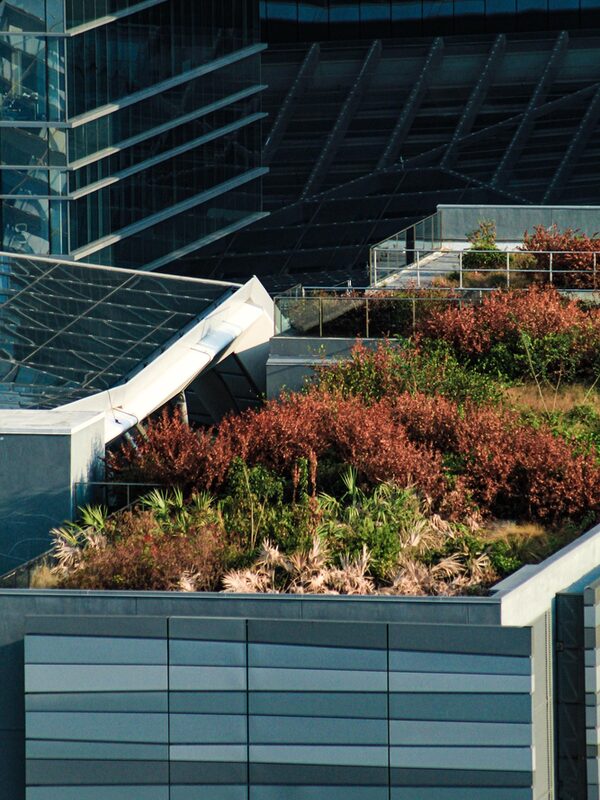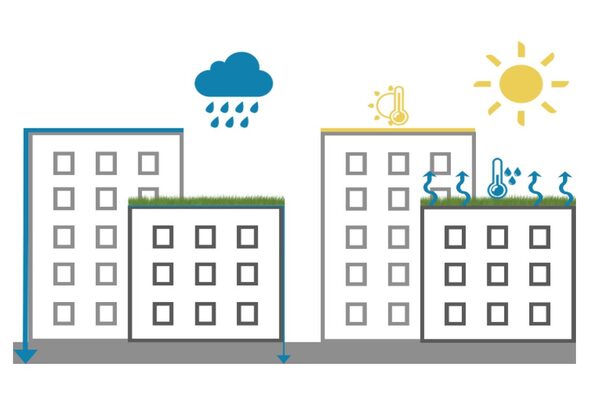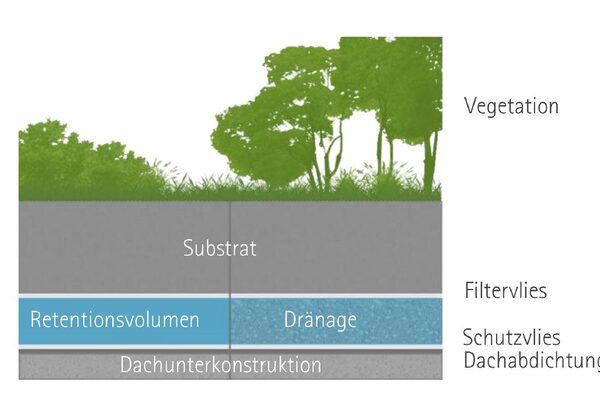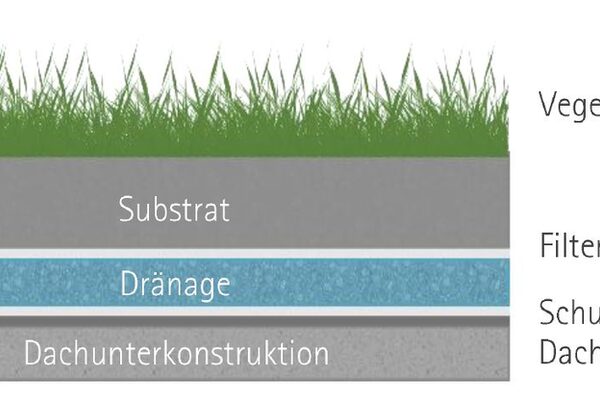Green roofs - for a better quality of life
Greening your roof is good for nature, the climate and yourself. Green roofs provide a habitat for animals and plants, improve the microclimate, protect the roof and reduce rainwater charges.
Who benefits from green roofs?
The building
On green roofs, the system structure protects the underlying roof waterproofing from environmental influences such as hail. As thermal insulation, green roofs contribute to energy savings. By combining green roofs and photovoltaics, it is possible to support the energy supply of your own home.
The human being
The roof surface can serve as additional usable space in private and public areas. Depending on the design, green roofs promote green recreation or the supply of fruit and vegetables. It can also be used as a sports or play area.
The microclimate
Particularly in the summer months, the city heats up a lot compared to the surrounding area. This is due to the high level of surface sealing and the lack of green spaces for cooling. Planting on the roof increases evaporation, which helps to cool the ambient temperature.
Animals and plants
Green roofs create additional green spaces that expand the habitats for animals and plants and promote their connectivity in the city. Green roofs thus contribute to the protection of biodiversity.
The air quality
The greener the roof, the more oxygen is produced. In addition, a large leaf mass increases the binding of particulate matter, which helps to improve air quality in the city.
The sewer system
With the increase in building development, larger volumes of water are being discharged into the sewer system. The consequences are overloaded sewers and flooding during heavy rainfall events. Green roofs protect against this by retaining 50 to over 90 percent of the rainwater that accumulates. This relieves the burden on the municipal sewage system.
How can green roofs be designed?
| Intensive build-up | Extensive structure |
| Higher build-up height (15 to 200 cm) | Low construction height (5 to 15 cm) |
| Higher weight (200 to 3000 kg/m²) | Low weight (60 to 200 kg/m²) |
| Relatively cost-intensive (from 60 €/m²) | Relatively inexpensive (20 to 40 €/m²) |
| Any type of planting possible, depending on the height selected (lawns, perennials, shrubs, trees) |
Drought-adapted plants (moss, sedum, herbs, grasses) |
| Higher maintenance requirements (3 to 10 times per year) |
Reduced rainwater fee due to green roofs
The amount of the rainwater fee depends on the area of a property that is subject to the fee. This is made up of roofed areas, such as the floor area of a house or garage, and artificially paved areas, such as terraces or courtyards. Various structural measures have a cost-reducing effect on the rainwater fee. These include green roofs. The ELW provides a fee calculator for private households in Wiesbaden to calculate their own rainwater fee.
Further information
Environmental Agency
Address
65189 Wiesbaden
Postal address
65029 Wiesbaden
Arrival
Notes on public transport
Bus stop Statistisches Bundesamt; bus lines 16, 22, 27, 28, 37, 45, X26, x72, 262
Telephone
Information on accessibility
- Barrier-free access is available
- The WC is barrier-free



